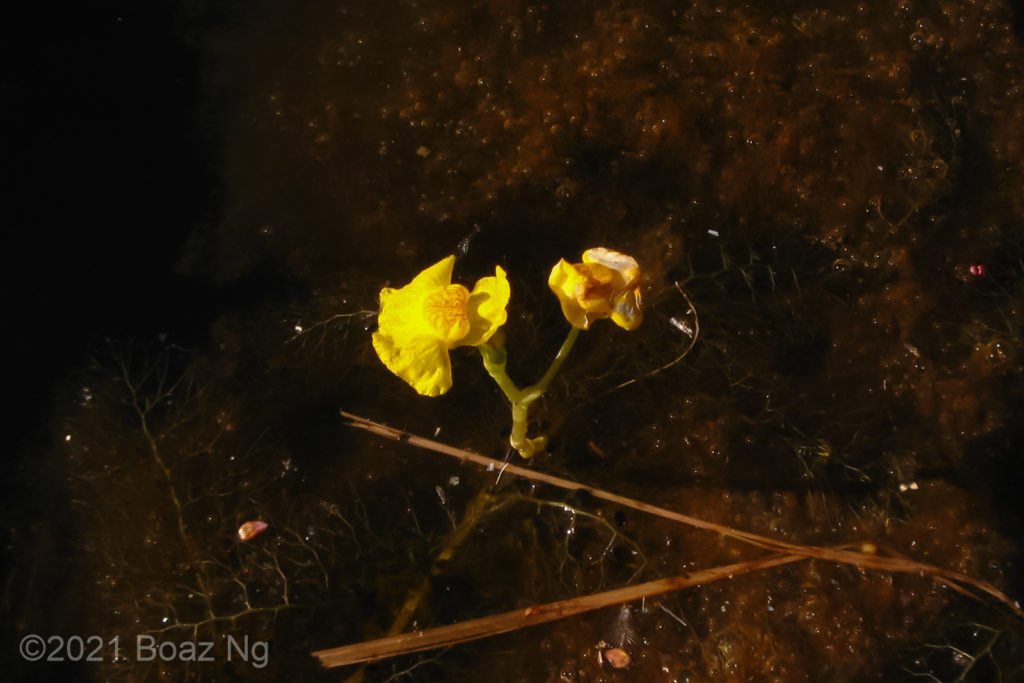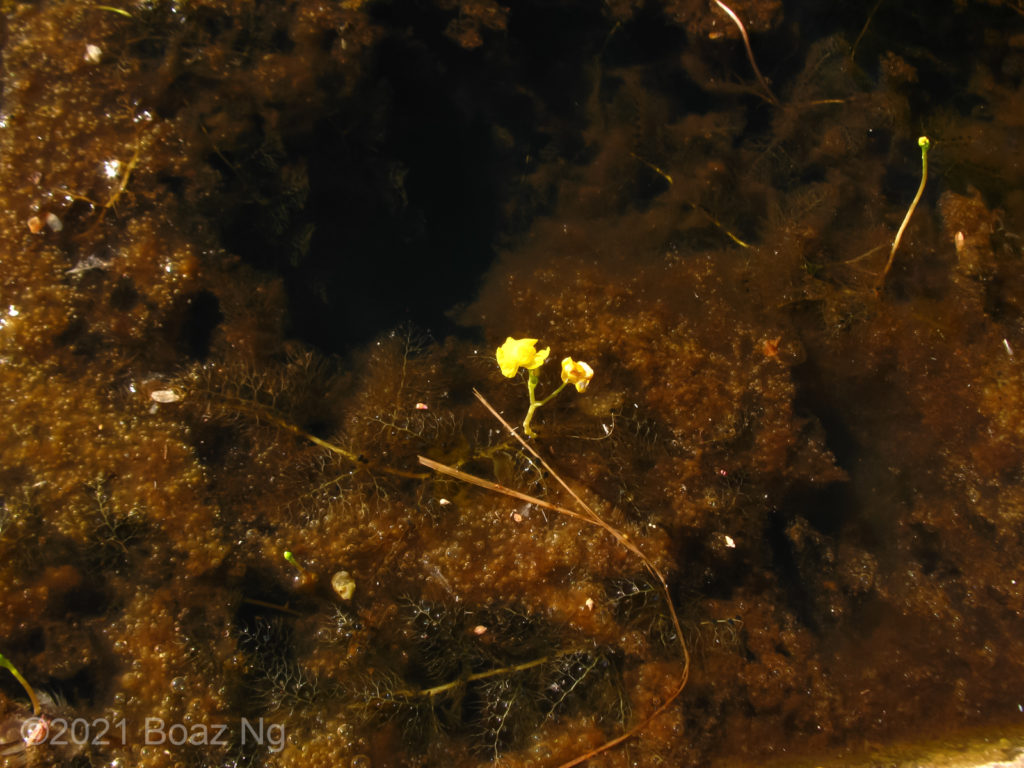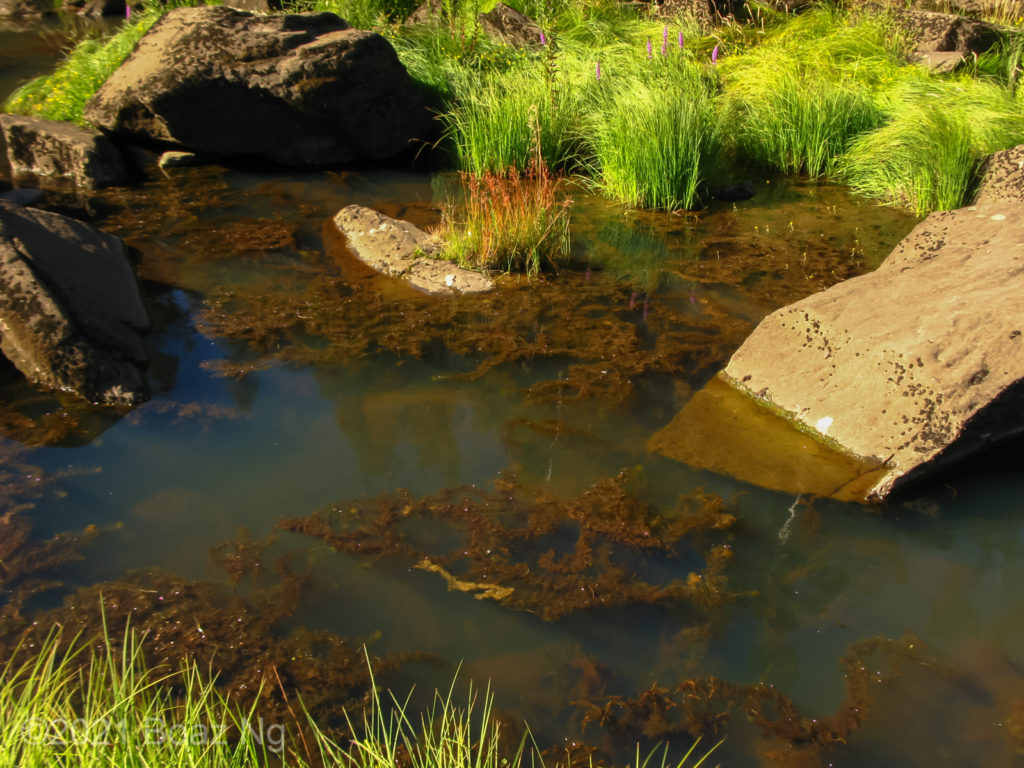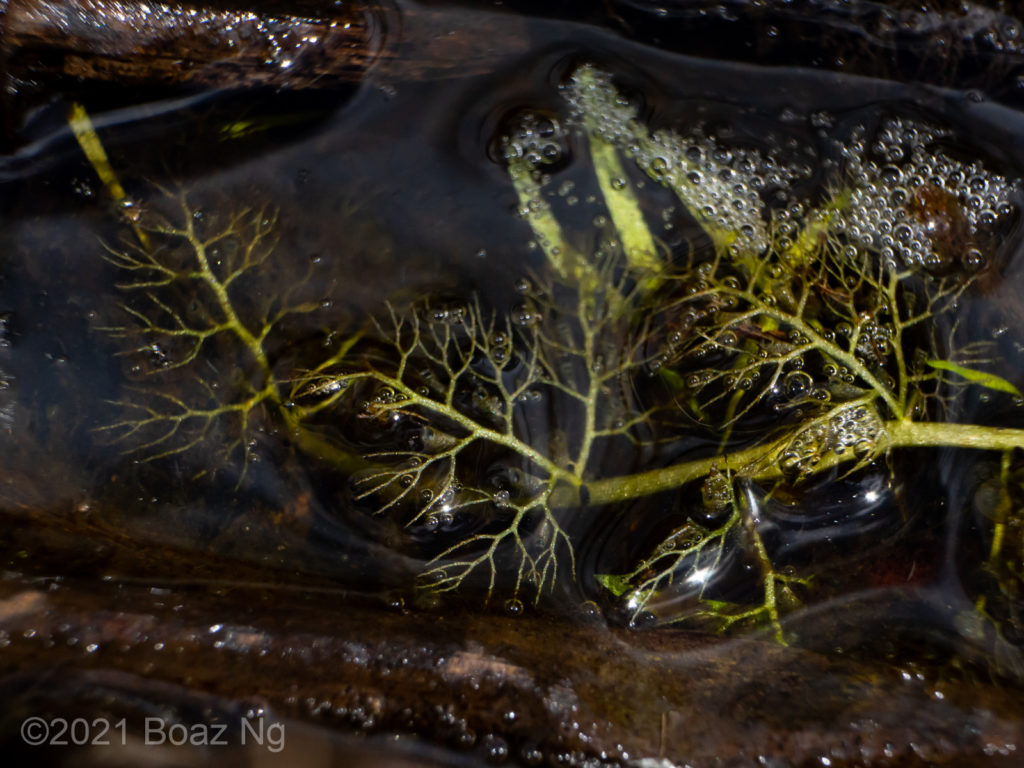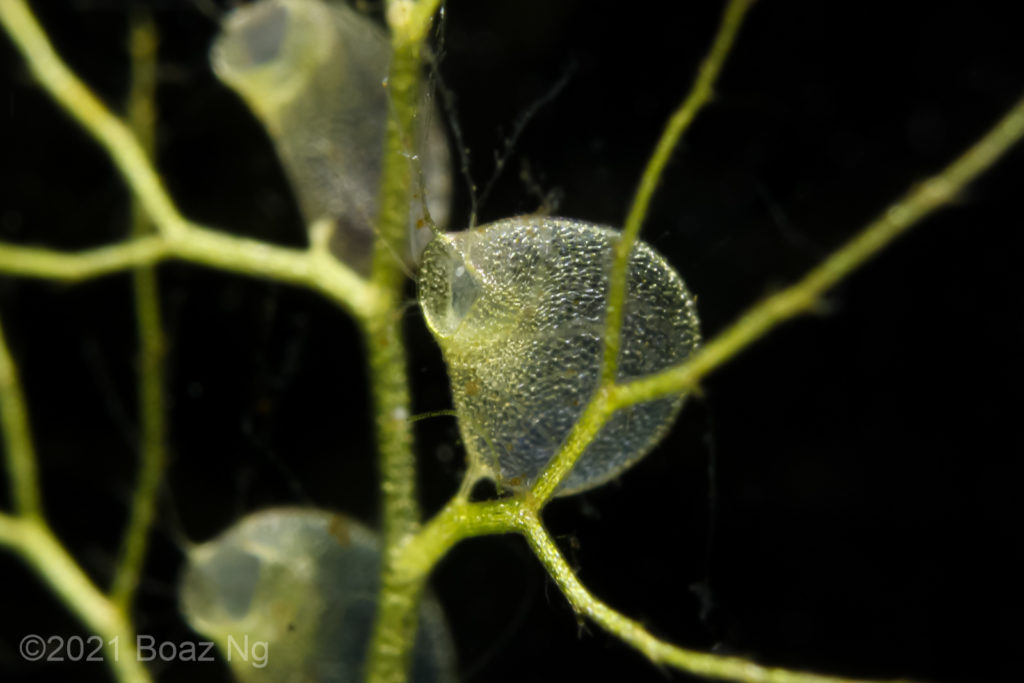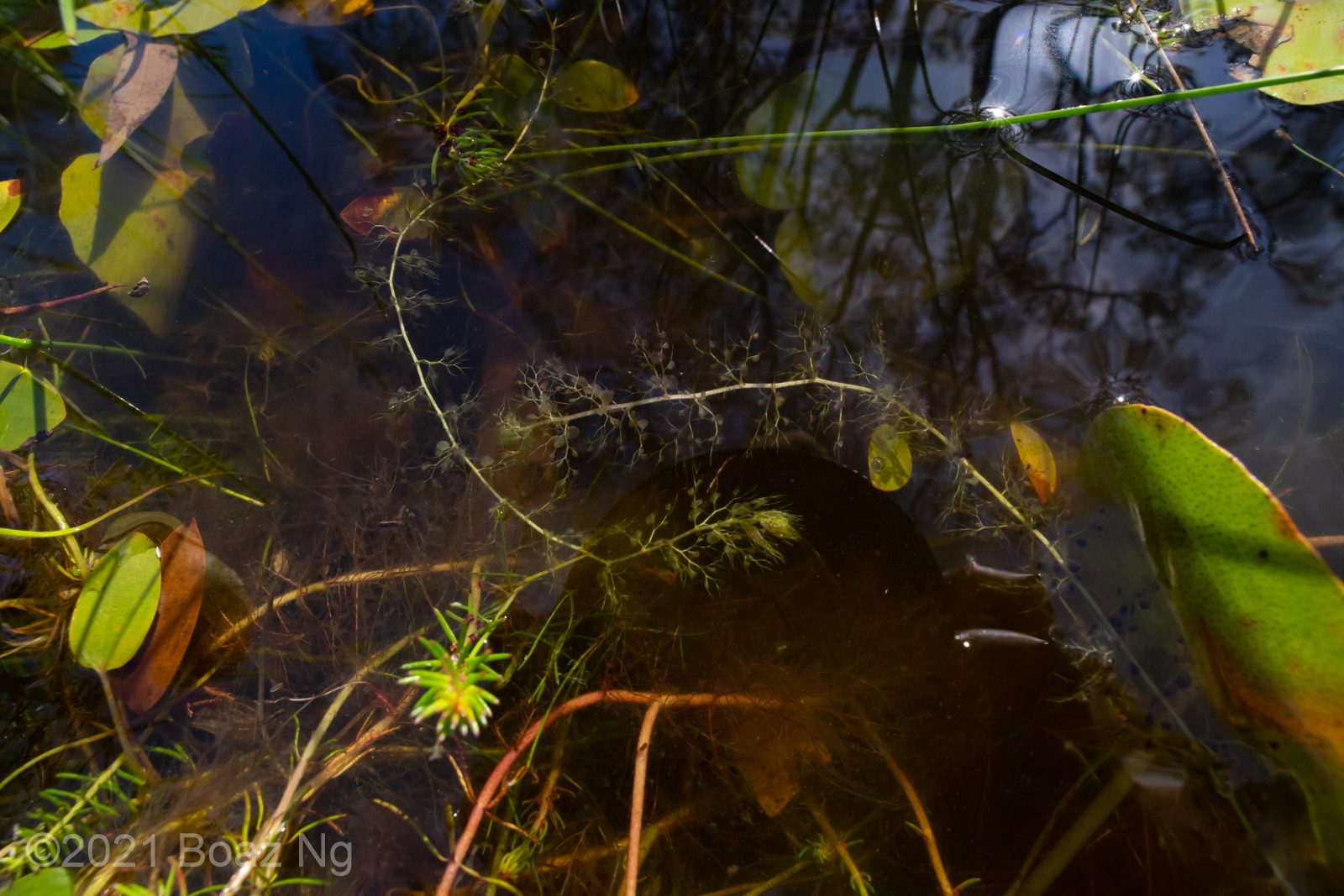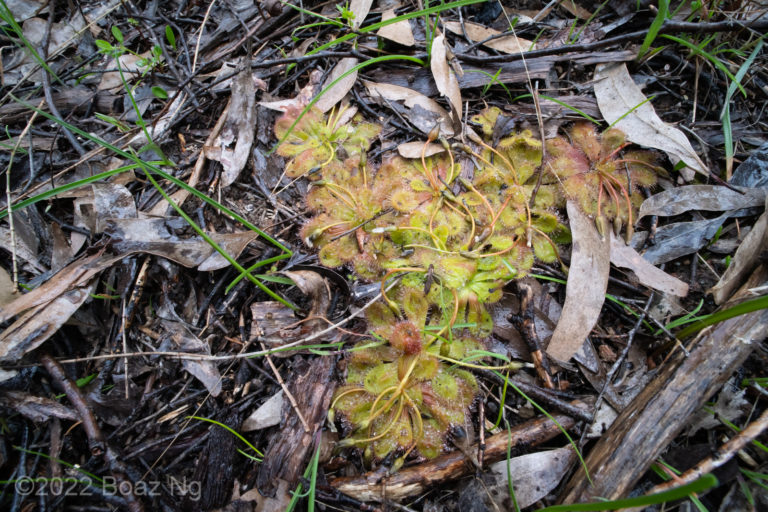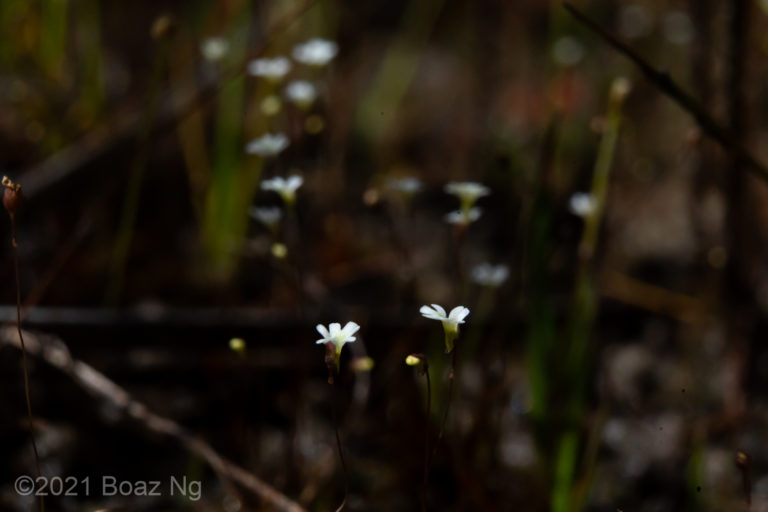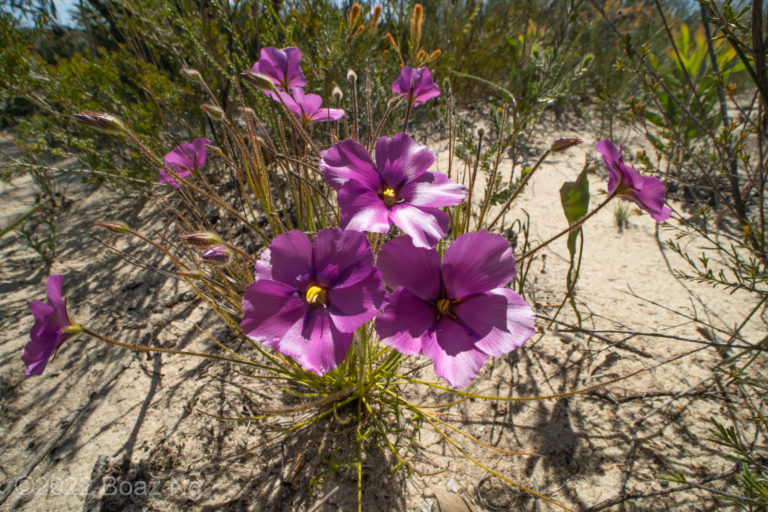Utricularia australis is a floating aquatic bladderwort. Although named for its Australian origin, it is represented in every continent except Antarctica.
The species produces long stems with side-stems that emerge at regular intervals. Each side stem is further divided into a network of smaller stolons out of which the traps are borne. The flowers are yellow, and have a prominent bulbous centre with a large fringe around the base. Red streaks often extend from the palate. The upper corolla lip is large and flared forwards. The spur is usually obscured under the lower corolla lip. The backsides of the petals are glabrous. In colder locations, turions that consist of a tightly packed resting bud of stolons are formed in autumn. These turions sink to the bottom of the water column to hibernate over the winter.
U. australis is found in still permanent waters, such as in reservoirs, ponds, billabongs and upstream of dammed rivers. In Australia, flowers are produced in summer. It is represented in all states of Australia and overseas throughout SE Asia, NZ, East Asia, Europe and Africa.
U. australis superficially resembles the other floating bladderworts most of which have similar yellow flowers. It often grows alongside U. gibba but can be distinguished by its large stolons that branch out of a thich central stem (the stolons of U. gibba are threadlike and do not form organised brances). It can be distinguished firstly by the peduncle, which is not supported by floats (U. aurea has small floats, U. muelleri & U. stellaris have large floats). It is further distinguished by the glabrous outer surface of the petals.
